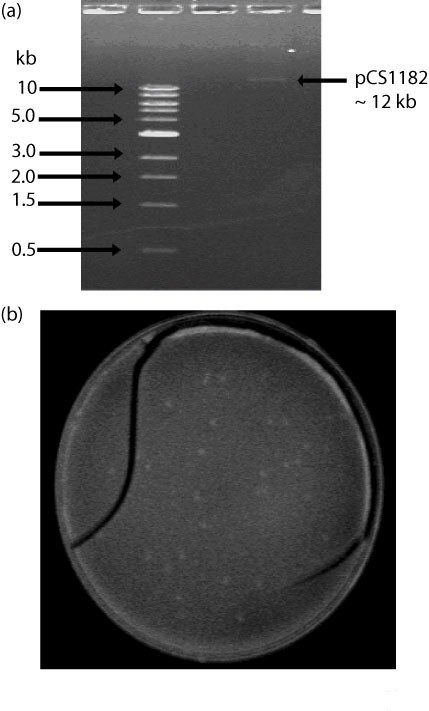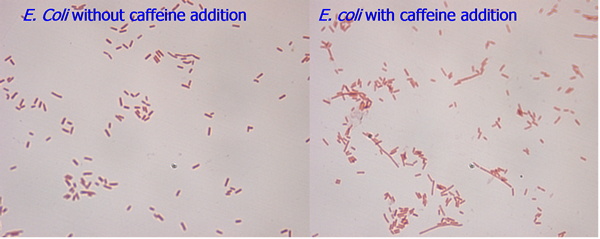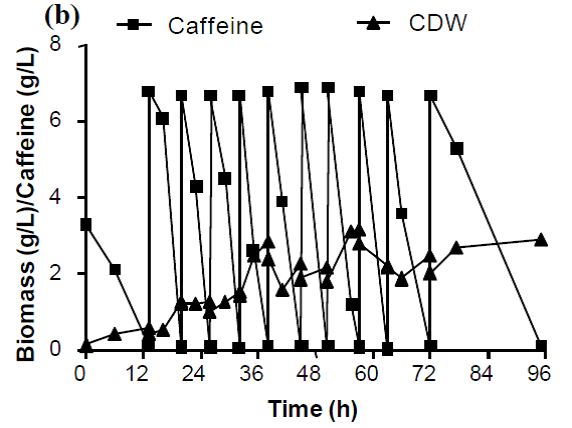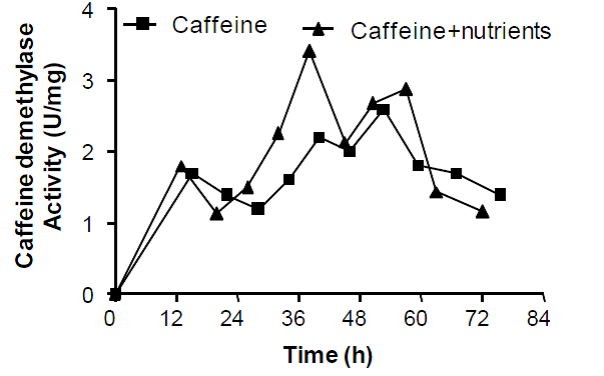
Bioprocess for caffeine degradation
The conventional methods of decaffeination in industry are supercritical CO2 and solvent extraction, which involves the use of chemical solvents. These methods are nonspecific to caffeine but also extract other flavor and color forming compounds in tea/coffee, expensive and non-ecofriendly process.

Hence an alternative biotechnological route is preferred. In this regard, my lab isolated a novel Pseudomonas sp. from coffee cultivation area. The strain was able to tolerate up to 20 g/l of caffeine (highest reported so far). The possible involvement of a 12 kb plasmid in this strain particularly in chemotaxis and caffeine tolerance has been also observed.

Fig 2b. Transformation of PCS1182 in E.coli

Bioprocess optimization techniques were employed, by which the process conditions were optimized and the degradation rate of this strain was improved 0.28 g/l.h (highest reported so far). Further bioreactor studies were performed and increased the production of caffeine demethylase to 3400 U/g protein. Under this condition, 275 g of caffeine was degraded in 75 h with rate of 3.6 g/h (highest reported so far).

As an industrial application, we could remove 80% of caffeine in actual tea samples in 7.5-10 h, which need to be improved to maintain the property of tea. Also process to convert caffeine in industrial effluent to value added compound is being studied. In the presence of suitable inhibitors, we could convert caffeine to theobromine (55% yield).

The biocatalyst responsible for the degradation of caffeine (caffeine demethylase) was purified to homogeneity and characterized. This is a novel biocatalyst which does not require CCR for its activity.
s
